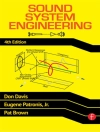In the five decades since NASA was created, the agency has sustained its legacy from the National Advisory Committee on Aeronautics (NACA) in playing a major role in U.S. aeronautics research and has contributed substantially to United States preeminence in civil and military aviation. This preeminence has contributed significantly to the overall economy and balance of trade of the United States through the sales of aircraft throughout the world. NASA’s contributions have included advanced flight control systems, de-icing devices, thrust-vectoring systems, wing fuselage drag reduction configurations, aircraft noise reduction, advanced transonic airfoil and winglet designs, and flight systems. Each of these contributions was successfully demonstrated through NASA flight research programs. Equally important, the aircraft industry would not have adopted these and similar advances without NASA flight demonstration on full-scale aircraft flying in an environment identical to that which the aircraft are to operate-in other words, flight research. Flight research is a tool, not a conclusion. It often informs simulation and modeling and wind tunnel testing. Aeronautics research does not follow a linear path from simulation to wind tunnels to flying an aircraft. The loss of flight research capabilities at NASA has therefore hindered the agency’s ability to make progress throughout its aeronautics program by removing a primary tool for research.Recapturing NASA’s Aeronautics Flight Research Capabilities discusses the motivation for NASA to pursue flight research, addressing the aspects of the committee’s task such as identifying the challenges where research program success can be achieved most effectively through flight research. The report contains three case studies chosen to illustrate the state of NASA ARMD. These include the ERA program and the Fundamental Research Program’s hypersonics and supersonics projects. Following these case studies, the report describes issues with the NASA ARMD organization and management and offers solutions. In addition, the chapter discusses current impediments to progress, including demonstrating relevancy to stakeholders, leadership, and the lack of focus relative to available resources.Recapturing NASA’s Aeronautics Flight Research Capabilities concludes that the type and sophistication of flight research currently being conducted by NASA today is relatively low and that the agency’s overall progress in aeronautics is severely constrained by its inability to actually advance its research projects to the flight research stage, a step that is vital to bridging the confidence gap. NASA has spent much effort protecting existing research projects conducted at low levels, but it has not been able to pursue most of these projects to the point where they actually produce anything useful. Without the ability to actually take flight, NASA’s aeronautics research cannot progress, cannot make new discoveries, and cannot contribute to U.S. aerospace preeminence.
Aeronautics and Space Engineering Board & Committee to Assess NASA’s Aeronautics Flight Research Capabilities
Recapturing NASA’s Aeronautics Flight Research Capabilities [EPUB ebook]
Recapturing NASA’s Aeronautics Flight Research Capabilities [EPUB ebook]
Beli ebook ini dan dapatkan 1 lagi PERCUMA!
Bahasa Inggeris ● Format EPUB ● Halaman-halaman 104 ● ISBN 9780309255417 ● Penerbit National Academies Press ● Diterbitkan 2012 ● Muat turun 3 kali ● Mata wang EUR ● ID 7143893 ● Salin perlindungan Adobe DRM
Memerlukan pembaca ebook yang mampu DRM












